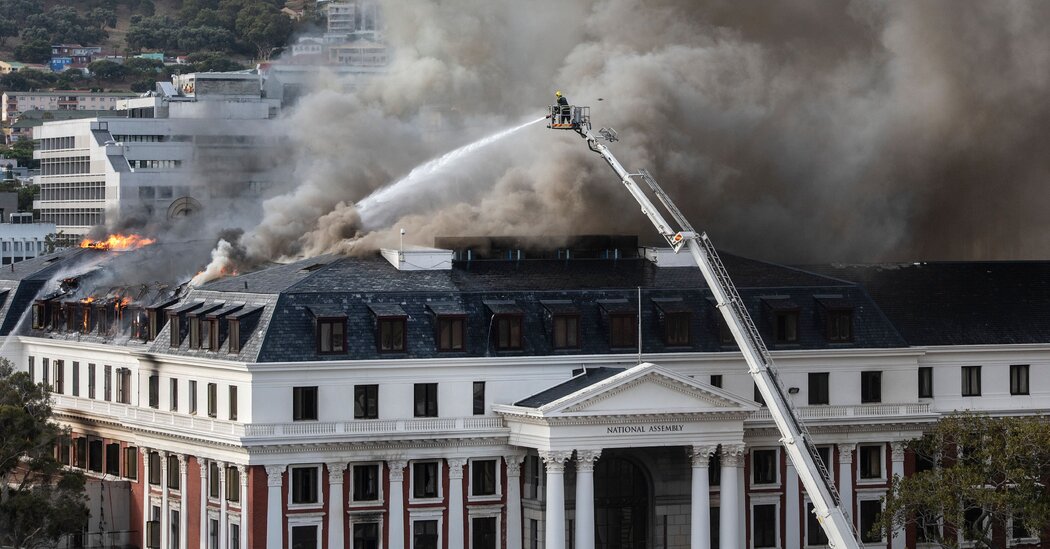
CAPE TOWN — Prosecutors on Tuesday charged a 49-year-old man with arson, theft and housebreaking in connection with the large fire that devastated the complex containing South Africa’s Parliament, gutting the National Assembly building and destroying lawmakers’ offices.
The suspect, Zandile Christmas Mafe, is accused of starting the fire, which started early Sunday and was not fully extinguished until Tuesday morning, along with charges of contravening state security laws, because the structure is a site of national strategic importance.
Mr. Mafe, who lives in Cape Town’s Khayelitsha township according to court documents, did not enter a plea, although his lawyer, Luvuyo Godla, said he plans to plead not guilty. He remains in custody, and prosecutors have opposed bail, citing the severity of the charges.
Security officials arrested Mr. Mafe at the Parliament complex on Sunday morning, spotting him shortly after the fire was reported. He was caught with stolen property, the police said, although they did not give further details.
Mr. Mafe appeared only briefly in a packed magistrate’s court, a short distance from the gutted parliamentary precinct in the city center, wearing a faded long-sleeved gray shirt with denim shorts and dirty sneakers as he stood in the dock.
Standing behind a Perspex screen, in line with pandemic regulations, he lowered his mask so reporters could see his face.
Mr. Godla said his client had moved to Cape Town about six years ago and did not have a job. He accused the government of using Mr. Mafe as a scapegoat for its failure to protect its own infrastructure.
“What interest would that poor man have in Parliament?” he said, speaking to reporters on the steps of the court.
The case was postponed until Jan. 11, to allow investigators to access the site, which remains dangerous.
The fire was only extinguished early on Tuesday, according to JP Smith, Cape Town’s mayoral committee member for safety and security. Firefighters will continue to monitor the buildings.
On Monday afternoon, the fire flared up in a roof. Cape Town’s strong southeasterly wind, combined with wooden floorboards, years of dust and recently replaced bitumen — an asphalt used to seal the roof — created conditions for the fire to resume.
By midnight, the fire was brought under control, and teams of firefighters worked their way through what Mr. Smith described as a “labyrinth” of rooms to locate and extinguish other potential hot spots, winding lengths of hose through a “maze” of passages.
More than 60 firefighters battled the blaze, supported by crew from South Africa’s Air Force. At one point, the wind was so strong that firefighters could not risk using aerial platforms.
Instead, Mr. Smith said, they pulled “death-defying Spider-Man moves,” climbing up the side of the building to prevent the fire from sweeping into Tuynhuys, the official office of the president and one of the oldest buildings in the city.
Zanele Mji reported from Cape Town, and Lynsey Chutel from Johannesburg.




